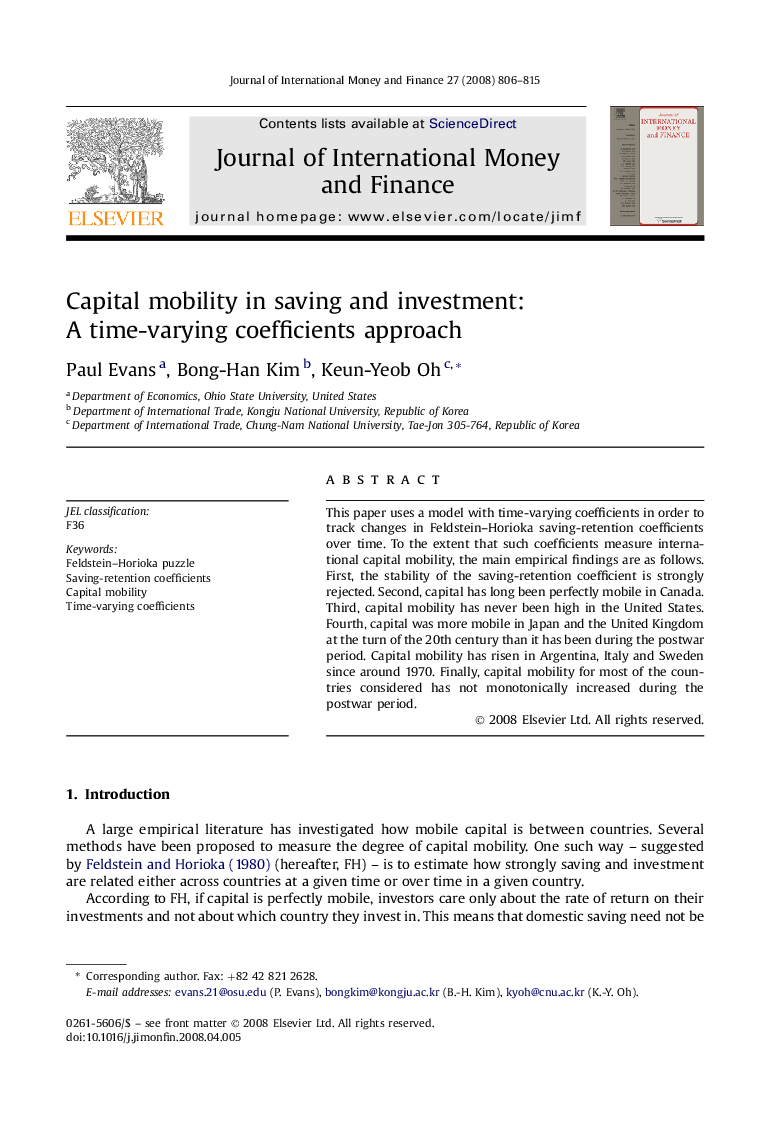| Article ID | Journal | Published Year | Pages | File Type |
|---|---|---|---|---|
| 964439 | Journal of International Money and Finance | 2008 | 10 Pages |
This paper uses a model with time-varying coefficients in order to track changes in Feldstein–Horioka saving-retention coefficients over time. To the extent that such coefficients measure international capital mobility, the main empirical findings are as follows. First, the stability of the saving-retention coefficient is strongly rejected. Second, capital has long been perfectly mobile in Canada. Third, capital mobility has never been high in the United States. Fourth, capital was more mobile in Japan and the United Kingdom at the turn of the 20th century than it has been during the postwar period. Capital mobility has risen in Argentina, Italy and Sweden since around 1970. Finally, capital mobility for most of the countries considered has not monotonically increased during the postwar period.
